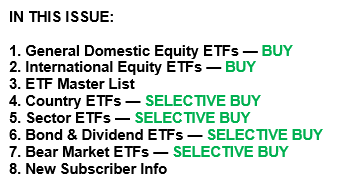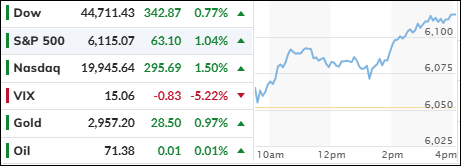ETF Tracker StatSheet
You can view the latest version here.
STOCKS, BITCOIN, AND GOLD RISE DESPITE INFLATION CONCERNS

- Moving the market
The major indexes paused early on as traders digested this week’s gains, most of which were generated yesterday.
President Trump’s memorandum outlining a plan for reciprocal tariffs on goods from countries with duties on U.S. products boosted sentiment for equities. The delayed implementation of these tariffs provided additional optimism. The tech sector benefited the most, with the Nasdaq leading the charge for the week.
Traders were also relieved that the CPI and PPI reports, although hotter than expected, suggest a softer upcoming reading for the Personal Consumption Expenditures (PCE) index, the Fed’s preferred inflation gauge.
However, concerns about stagflation—rising inflation coupled with lower growth—resurfaced as core retail sales and manufacturing activity for January both declined, contrary to expectations.
Despite these mixed signals, the week ended positively with stocks, Bitcoin, and gold moving higher, although gold faced some pressure today. Bond yields and the dollar were lower as rate-cut expectations rebounded.
The mega-cap tech sector broke out of its trading range, partly due to Meta’s impressive 20th consecutive up day, the longest winning streak for any Nasdaq stock ever, as noted by ZH. The most shorted stocks were squeezed all week, adding to the bullish market sentiment.
With inflation rearing its ugly head again, will we see a repeat of the 1970s, or will this time be different?
Read More





